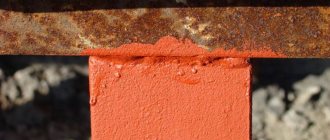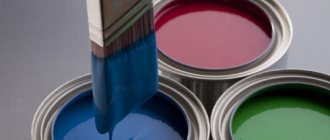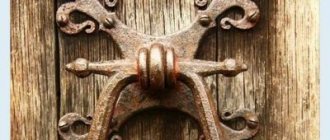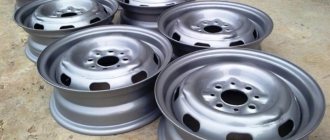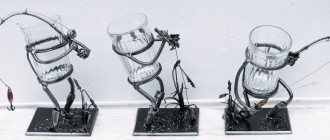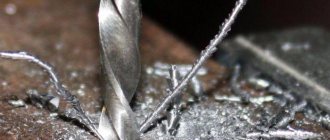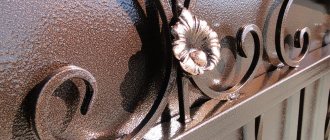Why paint the grill
Is it necessary to paint at all?
My great friend, Captain Obvious, shared advice when it’s definitely not necessary:
- the kebab maker is welded from stainless steel or cast from cast iron - you will never wait for them to rust;
- the steel has been subjected to oxidation - there is already a protective film on the surface;
- you bought a light roasting pan made of very thin metal - you shouldn’t waste time and paint, which will crumble during the first heating when the walls “lead”.
Heat and weather protection
The walls, as well as the bottom of the brazier, come into contact with an open fire, hot coals and are heated from 650 to 1500 °. In addition, water gets into the brazier, the metal rusts, and the brick is destroyed. Without a protective coating, the metal will burn out within a couple of seasons. And it doesn't look very good. Good paint will protect against these problems and even decorate the barbecue.
Firewood gives a much higher temperature than coal or briquettes
What to protect from?
An unpainted barbecue rusts.
Let's look at a list of things that have a harmful effect on barbecues and that you can prevent with your own hands:
- First of all, barbecues are used and stored outdoors, and precipitation and constant humidity have a detrimental effect on the metal parts of the device, forming rust.
- The fryer is subject to constant contact with fire. Metal expands and contracts due to heat, so it must be heat resistant.
Based on the foregoing, it is easy to determine that paints for barbecues must be heat-resistant and protected against corrosion in order to reliably protect it.
How to paint a barbecue: paints for barbecue
Regular coating fades due to high temperature. The paint coating will have to work in extreme conditions and come into contact with food; the requirements for it are quite strict.
There are quite high requirements for paint for painting barbecues:
- withstand temperatures from 600 °C - do not crack, do not melt, do not burn;
- distribute evenly over the metal, leaving no free areas;
- do not enter into a chemical reaction with metal at normal temperature, as well as heating;
- do not release harmful substances when heated or exposed to water.
Kinds
Grill paint is the most common choice. Pros: resistant to high and low temperatures, changes, humidity, easy to apply. Enamel is stable in a limited temperature range, but looks more impressive. Suitable for external parts that are not in direct contact with fire. The varnish creates an additional protective coating and enhances its thermal protective properties.
Temperature subtleties
Based on the temperature for which the coating is designed, it is divided into 3 types:
- high-temperature - can withstand temperatures of 200-600°. Will not withstand contact with a heated surface;
- heat-resistant - designed for temperatures of 500-1000°, can withstand rapid and spot heating, but can crack from fire;
- fire-resistant - withstands more than 1000°, contact with flame.
All compositions that can withstand heating above 200° are called by the general term - heat-resistant. The temperature at which heat-resistant barbecue paint retains its properties is indicated on the packaging.
Heat-resistant paint for stoves and fireplaces on metal
Another type of paint coating belongs to the heat-resistant class - fireproof. Unlike fire-resistant, it does not withstand high temperatures, and upon contact with a flame it swells. Its task is to stop a fire if it has started. Therefore, fire-resistant paints are not suitable for barbecues.
Choosing the right consistency
Liquid paint coating is a simple and convenient option. Less common are powder coatings for metal, aerosols. Each has advantages and disadvantages.
| Characteristics | Liquid | Powder | Aerosol |
| Surface preparation | Clean from dirt, no primer required | Needs cleaning and priming | Needs cleaning and priming |
| Application | Easy to apply, good adhesion, filling small cracks | Uniform application, reusable powder | A uniform thin layer without streaks or drops, gets into hard-to-reach places |
| Palette and tinting | Rich palette, tinting possible | Varied palette, tinting is not possible, different textures | Varied palette, independent tinting is not possible |
| Tools | Brush, container for diluting paint | Sprayer, kiln (cannot be replaced by open fire) | Not required |
| Drying time | From 2 hours to a day depending on the type of paint | Up to half an hour | Up to 1 hour |
| Protective properties | High | High | Average |
| Life time | 10 years | 15 years | 5 years |
| pros | Easy to use, easy to use, no special skills required | Safety, low paint consumption, quick drying, even coating | The ability to quickly paint a kebab maker at home |
| Minuses | Leaks, leaves stains, drops, takes a long time to dry, unpleasant smell, fades, cracks | Requires special equipment, skills, difficult to access at home, requires a workshop | If it gets on foreign objects, it is dangerous for the respiratory tract (a construction respirator is required). If the paint is dry, it cannot be thinned. |
How to paint a metal grill and how to choose quality paint
Heat-resistant acrylic and organosilicon compounds are suitable for barbecues. Acrylic is available in liquid and aerosol form, is easy to apply, does not crack, and does not bubble from fire. It works at temperatures up to 800°, but from prolonged contact with open fire it loses its beneficial properties.
Organosilicon paints are only liquid. They provide reliable protection against fire and can withstand temperatures up to 1000° for 3-4 hours. They take a long time to dry and do not produce such a variety of colors as acrylic.
Common colors are black, gray. Soot, dirt, and coal marks are invisible on them.
The color of the coating does not directly affect the thermal protective properties. However, black coatings are produced that can hold temperatures of 600, 800, 1000°, and, for example, pink or red - only up to 500-600°.
Popular brands (Russia, Ukraine, Belarus):
- Kudo;
- Certa;
- Bosny;
- Decorix;
- Veslee;
- Elcon;
- Grog.
These brands offer paints, enamels, and varnishes of any color. The most popular consistency is an aerosol can. It takes two cans of 600 degree aerosol paint to cover a barbecue from a 50-liter gas cylinder.
Despite the higher cost, heat-resistant paint for stoves and fireplaces marked 700 degrees has proven to be much more economical. Half a 350 g jar is enough to cover the body twice. It is also more resistant to fire during prolonged use of the kebab grill.
Materials and tools for painting
For high-quality painting, you will need to purchase not only paint, but also tools, as well as additional materials. Heat-resistant paint, unlike regular paint, does not require a primer, so you can do without it.
The tools required for application depend on the type of coating. For liquid compositions you will need a brush or roller, an aerosol is sprayed directly from a can, and powder paints require the use of a special sprayer. In addition, you will need newspapers to cover the surface around the grill and protective equipment - gloves and a respirator.
A drill with a special attachment will speed up the process of cleaning metal
When preparing the surface of the fryer, you also use:
- sandpaper;
- a metal brush to clean off the remnants of the old coating and rust (if the welding of the barbecue was completed recently, such treatment will not be required);
- degreasing solvent;
- washing powder dissolved in water.
Let's look at the technology for applying each type of paint, as well as alternative methods for processing a metal barbecue in more detail.
Painting the grill with heat-resistant paint
Tools and materials
Tools needed for work:
- brush or sandpaper to clean the surface;
- acetone or any liquid containing it;
- rags for working with acetone;
- primer;
- dye;
- brush, backing;
- gloves;
- respirator.
Surface preparation
Painting begins with surface preparation. This step cannot be skipped: the color will lie unevenly, and corrosion will continue to damage the metal. Work outdoors in warm, dry, windless weather or indoors with good ventilation. The face, hands, clothing, and surrounding objects are protected with cloth, film or paper.
The collapsible grill is completely disassembled. Elements that do not come into contact with the fire - a thermometer, wooden or plastic handles, an additional table - are removed or covered with protective tape.
The next stage is cleaning the metal with a brush or sandpaper. Completely remove dirt, soot, traces of coals, and surface rust. The completely cleaned surface is degreased with acetone. Allow to dry. If a primer is used, it is applied and also allowed to dry.
A gas cylinder grill prepared for painting
The grill is painted only on the outside. There is no need to paint the interior surfaces - fire-resistant paint should not come into contact with food. Soot accumulates inside the kebab maker in any case, and the aesthetic effect of painting is minimal.
Painting the barbecue
Painting with heat-resistant paint - aerosol from a spray can:
- Prepare the barbecue.
- Shake the can.
- Spray the product from a distance of 20 cm.
- Each layer dries in 30 minutes.
- Apply 2-3 layers.
- After a day, light it and leave it to burn for 15 minutes.
Painting with liquid paint:
- Prepare the barbecue.
- Mix the paint.
- Apply the composition with a brush.
- Allow the paint to dry for at least an hour.
- Apply another layer.
- Burn.
The layers must be applied in a thin layer to avoid peeling.
Useful tips
For better results, we suggest using some tips. Then the result will please the eye for a long time:
- Paint using an aerosol, preferably in calm weather.
- The grill needs to be painted from the outside.
- After cleaning the surface from dirt, you can wash it and let it dry thoroughly.
- When painting, it is necessary to create such that when drying, dust and foreign particles do not fall on the surface. The result of this coloring may be disappointing.
In conclusion, we can say that the process of painting a barbecue is not as tedious as it seems. But it must be approached carefully. It is necessary to choose a suitable paint that meets all basic requirements. Next, prepare the surface to be treated. Apply several layers, first allowing them to dry thoroughly. That's all! Follow the process technology so that the grill does not deteriorate or rust.
DIY heat-resistant paint for barbecue
Heat-resistant paint based on liquid glass is very easy to make with your own hands. Simply mix the ingredients in a plastic bottle and shake well.
Liquid glass is a heat-resistant material that is used for low-cost metal coating. The simplest composition is 200 g of liquid glass and 10 g of silver powder - serebryanka.
They also paint the outside in 2-3 layers. Each layer dries for 10-15 minutes. The composition must be applied immediately after preparation.
Review of popular brands
- Thermal. Made from silicone resin. Able to withstand high temperatures, up to iron redness. When using, it is necessary to wear protective equipment, as it contains harmful components and if it comes into contact with the skin and mucous membranes, it may cause irritation.
- Certa. Domestic paint. There is a wide range of shades. Able to withstand temperatures up to 900 degrees. Available in aerosol form.
- Kudo. Enamel made in Russia, based on silicon. The range contains 20 shades. Able to withstand temperatures up to 600 degrees.
- Hammerite. Withstands heating up to 600 gr. The advantage is that it can be applied to rust.
- Bosni Hi-Temp. Heat resistance up to 650 gr.
- Thermal KO-811. Protects against corrosion. Heat resistant, withstands 600 gr.
- Elkon. The Russian manufacturer produces paint in cans and aerosols. Withstands up to 700 gr.
Burnishing the grill
An alternative to painting a metal Dutch oven is bluing. Another name is blackening, chemical oxidation. For work, caustic chemical compounds are used - a combination of caustic soda, sulfuric acid and laundry soap.
Sequencing:
- The surface is thoroughly cleaned of rust.
- The parts are immersed in a container with sulfuric acid for 5 minutes.
- Dissolve the soap in water and bring to a boil. The parts are immersed in the solution for 10 minutes.
- The caustic soda solution is heated to 140°. The parts are in it for 1.5 hours.
- Then rinse with running water.
Work only with gloves, respirators, and protective clothing.
The result of blueing a barbecue at home is black metal that does not rust or burn.
How to paint a brick grill
The porous structure of the brick absorbs dirt, soot and dust; it is difficult to clean the stove, and over time it loses its appearance. Therefore, the new brick hearth is painted with heat-resistant paint. Outdoors and in the gazebo, the coating protects the barbecue from humidity and temperature changes that destroy the brick.
Organosilicon compounds, acrylic and alkyd paints are used for work. The latter produce bright colors, but are not sufficiently resistant to heat. Only the outer surface is painted: the walls of the firebox and the chimney.
Common brands:
- Elcon;
- Decorix;
- Kudo;
- Ecoterra;
- Prestige.
Popular colors are natural brick, red copper, gold, red, white, yellow. An ancient recipe for heat-resistant coating is a mixture of egg yolks and milk in equal parts. The components are mixed until smooth.
For single-layer painting 2 sq.m. the front wall of the barbecue will need two cans
Types of thermal paints
Silicone enamel or varnish
– Names of such trademarks as KO 8101, KO 8111;
– Heat-resistant varnishes KO/08, KO/815;
– Organo-silicate mixtures, such as OS 12/03.
This mixture can withstand temperatures of 500 degrees, the composition of which is quite resistant to high moisture and does not allow the metal to collapse. Such solutions are recommended for use mainly on metal surfaces, but can also be used on roasting pans made of other materials.
Silicone enamel
Mixtures with the addition of acrylic
If you want to process the surface of the grill less often, then paint with the addition of acrylic is suitable for you and is designed for long-term and effective operation at a temperature of +650°C, and 800°C if this excess is short-term. Aerosol cans in this version have gained the greatest popularity, although they require additional caution in use.
Aerosol paints
Before using these mixtures, there is no need to prime the surface, unless, of course, it is susceptible to corrosion. These paints are resistant to various oils and salt. The most popular colors are, of course, gray and black.
Operation results
When properly applied high-quality heat-resistant paint, the metal structure does not burn or rust. The paint lasts 4-5 years. With active use, it lasts for 2-3 seasons, depending on weather conditions. To make a metal kebab maker last longer, it is covered and stored in a dry place.
The exterior brick barbecue is repainted every season. In winter, due to changes in temperature and humidity, the coating cracks. Before applying new paint, the old layer and dust are removed with a brush.
Coloring will definitely extend the life of the kebab maker. And you already know how to paint the grill.
Protection of brick structure
In most cases, the visual appearance of the brickwork does not suit the owners of barbecues, then full-fledged painting is an excellent way out of the situation. Whatever coloring substance you use to coat the product, the most important thing is that the composition is heat-resistant, because the brick can seriously heat up.
Brick structures are comfortable and stable, which cannot but please their owners. However, to change the appearance for the better, the fryer is painted with heat-resistant paint and varnish material. Brick materials often retain heat and quickly heat up to extreme temperatures, so the dye for the barbecue must withstand high temperatures. For processing it is worth taking silicone enamel.
Before work, the brick also needs to be prepared for painting. It must be completely rinsed and dried. You don’t have to apply a primer, because it won’t really affect the overall result. Heat-resistant paint is easier to apply with a special sprayer. This treatment will ensure an even layer and no streaks. The disadvantage of this type of painting is the high consumption of the composition; it will have to be applied in several layers. However, convenience is still more preferable in this matter.
